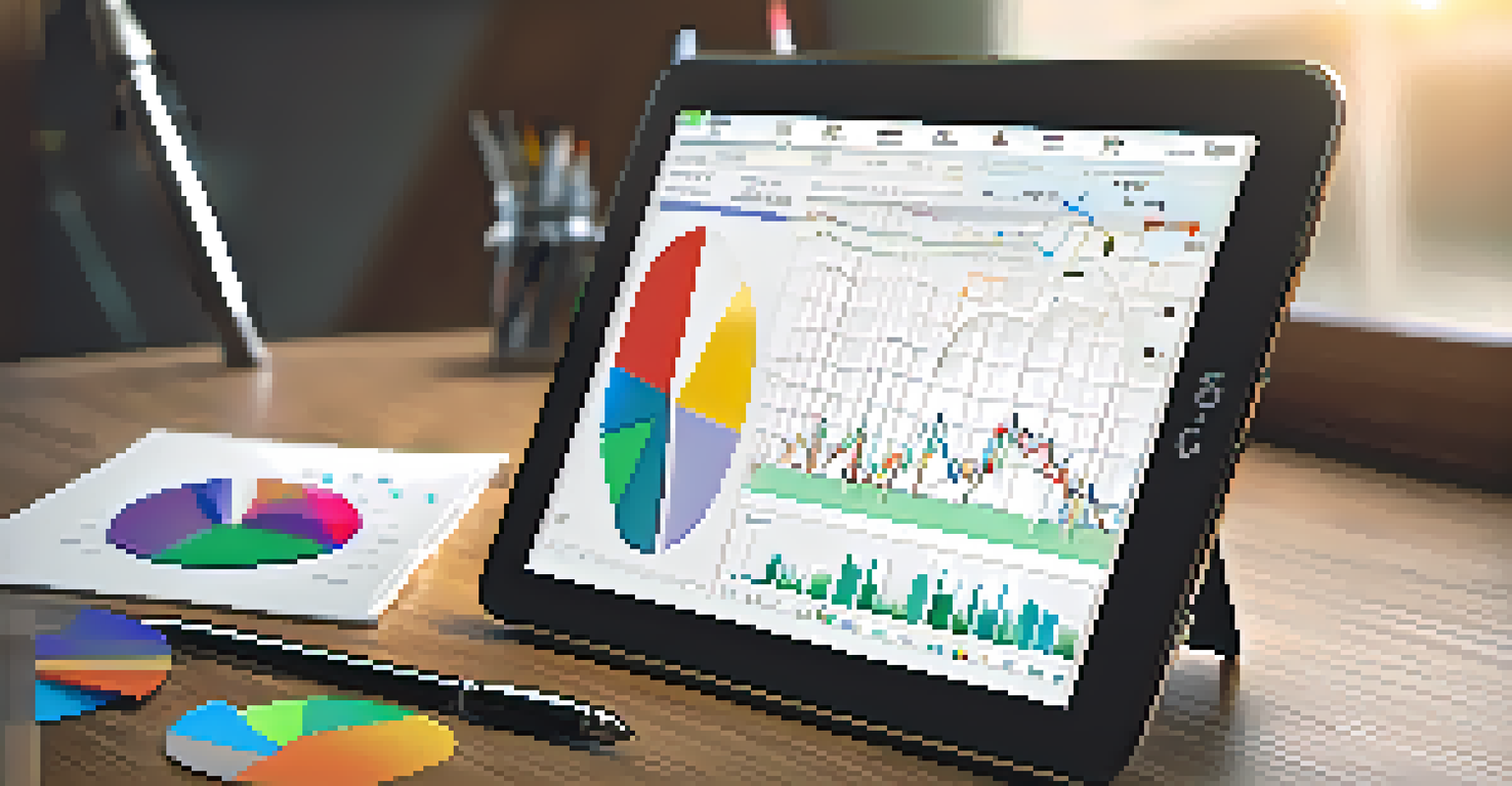Understanding the Basics of Technical Analysis in Crypto Trading

What is Technical Analysis in Crypto Trading?
Technical analysis is a method used to evaluate cryptocurrencies by analyzing statistics generated by market activity. It's like reading a map that shows you where the prices might go based on past movements. Instead of focusing on a cryptocurrency's fundamental value, technical analysis focuses on price trends and trading volume.
In investing, what is comfortable is rarely profitable.
Traders use charts and various indicators to predict future price movements, making it a valuable tool for anyone looking to navigate the volatile crypto market. Think of it as a weather forecast—while it may not be 100% accurate, it provides insights that can help you prepare for what’s ahead.
Understanding technical analysis can empower you to make informed trading decisions, minimizing risks and maximizing potential gains. It’s not just about guessing; it’s about interpreting data to develop a strategy that works for you.
Key Components of Technical Analysis
The foundation of technical analysis lies in three key components: price charts, trends, and indicators. Price charts visually represent price movements over time, helping traders spot patterns. Trends indicate the general direction in which a cryptocurrency is moving, whether upward, downward, or sideways.

Indicators, on the other hand, are mathematical calculations based on price and volume data. They act as tools to help traders make sense of the market, akin to a compass guiding a traveler. Together, these components create a comprehensive view of market behavior.
Understanding Technical Analysis
Technical analysis helps traders evaluate cryptocurrencies by examining price trends and trading volume.
By understanding these elements, traders can identify potential entry and exit points, which is crucial for crafting a successful trading strategy. It’s like building a toolkit—each component serves a purpose, helping you tackle different market scenarios.
Understanding Price Charts and Their Types
Price charts are the visual representation of a cryptocurrency's price movements. The most common types include line charts, bar charts, and candlestick charts. Each offers a different perspective, with candlestick charts being particularly popular among traders for their detailed depiction of price action.
The market is a device for transferring money from the impatient to the patient.
For instance, a candlestick chart displays the opening, closing, highest, and lowest prices within a specific timeframe, providing a rich narrative of market activity. It’s like reading a story where each candle represents a chapter in the trading journey.
By mastering how to read these charts, traders can gain valuable insights into market sentiment and potential future movements, allowing them to make more informed decisions. This skill is essential for anyone serious about succeeding in crypto trading.
Identifying Trends: Bullish vs. Bearish Markets
Trends are essential in technical analysis, as they indicate the overall direction of a cryptocurrency's price. A bullish market is characterized by rising prices, suggesting optimism and confidence among traders. Conversely, a bearish market indicates falling prices, often leading to a more cautious or pessimistic outlook.
Recognizing these trends is crucial for making timely trading decisions. For example, if you spot a bullish trend, it might be a good time to buy, while a bearish trend could signal that it’s time to sell or wait it out. It’s similar to riding a wave—you want to catch the ups and avoid the downs.
Key Components of Analysis
Price charts, trends, and indicators are essential tools that guide traders in making informed decisions.
Understanding these market conditions helps traders align their strategies with the prevailing sentiment, maximizing their chances of success. In crypto trading, being in sync with the market trend is key to thriving.
Common Technical Indicators to Know
Technical indicators are tools that help traders analyze price data and spot trends. Some of the most popular indicators include Moving Averages, Relative Strength Index (RSI), and Bollinger Bands. Each serves a unique purpose, offering insights into market momentum, overbought or oversold conditions, and potential price volatility.
For instance, the RSI ranges from 0 to 100 and helps traders identify whether a cryptocurrency is overbought or oversold, akin to checking the temperature before going outside. Meanwhile, Moving Averages smooth out price data to provide a clearer picture of the trend's direction.
By incorporating these indicators into their analysis, traders can make more informed decisions, enhancing their overall trading strategy. It’s like having a set of glasses that help you see the market more clearly, reducing the noise and highlighting the important signals.
The Importance of Risk Management in Trading
Risk management is a crucial aspect of trading that often gets overlooked. It involves setting limits on how much you're willing to lose on a trade, ensuring that no single trade can significantly impact your overall portfolio. Think of it as wearing a seatbelt while driving—you’re taking precautions to protect yourself.
Using stop-loss orders is one way to manage risk effectively. This order automatically sells your cryptocurrency at a predetermined price, preventing further losses in case the market takes a downturn. It’s like having a safety net that catches you if you fall.
Importance of Risk Management
Implementing a solid risk management strategy is crucial to protect your investments in the volatile crypto market.
Establishing a solid risk management strategy allows traders to navigate the unpredictable crypto market with more confidence. By prioritizing risk management, you can focus on your trading goals without the constant worry of losing everything in a single trade.
Putting It All Together: Developing Your Trading Strategy
With a solid understanding of technical analysis, it’s time to develop your trading strategy. This involves combining your knowledge of price charts, trends, and indicators to create a plan that works for you. Just like a chef combines ingredients to create a delicious dish, you’ll meld various elements to craft your unique approach to trading.
Start by setting clear goals—decide whether you're looking for short-term gains or long-term investments. Then, choose the technical indicators that resonate with your style and incorporate them into your analysis. This step is crucial, as it helps you stay focused and disciplined amid the market’s chaos.

Finally, remember that no strategy is foolproof. Continuous learning and adapting to changing market conditions is essential for success in crypto trading. By developing a well-rounded trading strategy, you’ll be better equipped to navigate the exciting world of cryptocurrencies.